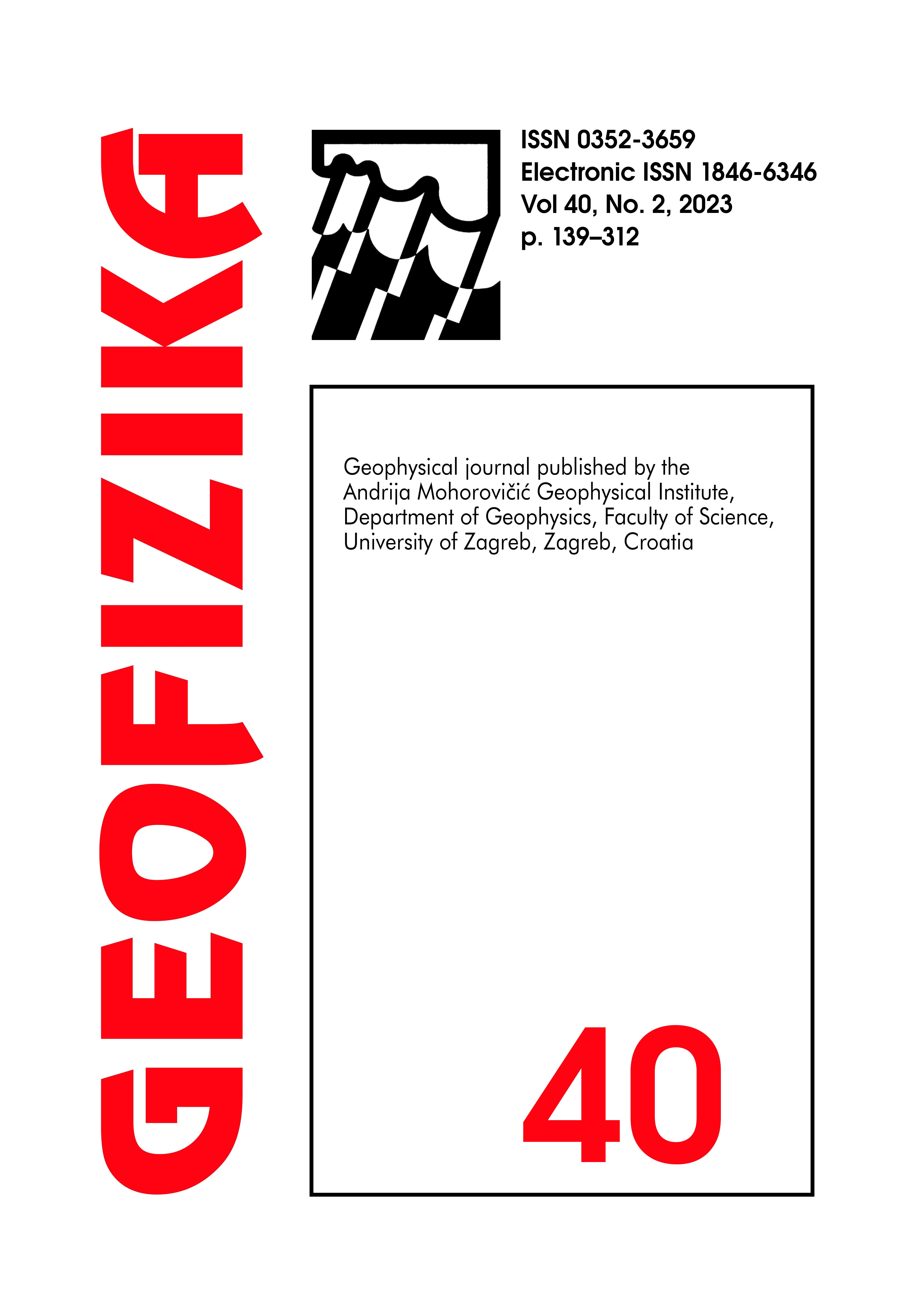Mediterranean meteotsunamis of May 2021 and June 2022: Observations, data analysis and synoptic background
DOI:
https://doi.org/10.15233/gfz.2023.40.8Keywords:
meteotsunami, Mediterranean Sea, Adriatic Sea, extreme sea-levels, high-frequency sea-level oscillations, Proudman resonanceAbstract
Meteorological tsunamis (i.e., tsunami-like waves of atmospheric origin) are regularly observed in the Mediterranean Sea. During a single event, destructive flooding usually occurs in one location or limited area. However, in May 2021 and June 2022, strong meteotsunamis hit several Mediterranean locations up to 500 km apart. In the morning hours of the 24th of May 2021, a meteotsunami hit Bonifacio on the island of Corsica (western Mediterranean, France) and in the afternoon hours of the same day, another meteotsunami hit Široka Bay on the island of Ist (Adriatic Sea, Croatia), 500 km away. About 13 months later, on the 26th of June 2022, a meteotsunami hit Ciutadella on the island of Menorca (Spain) and two days later Bonifacio, 400 km away. Sea-level and atmospheric pressure data and satellite imagery, as well as synoptic conditions, associated with both events were analysed in detail. It has been confirmed that in the Mediterranean, meteotsunamis occur when meteotsunamigenic synoptic conditions prevail over the area, with a strong southwesterly jet stream embedded in dynamically or convectively unstable atmospheric layers standing out as the most important condition. The meteotsunamigenic potential of each of the three bays (Ciutadella, Bonifacio, Široka Bay) was investigated by considering: (1) the potential for Proudman resonance on the shelves offshore of the bays, (2) the orientation of the mouth of the bay and (3) the frequency of meteotsunamigenic synoptic conditions over the area. The strongest and most frequent meteotsunamis occur at locations where the shelf characteristics (width, depth, orientation), bay mouth orientation and climatology of 500-hPa winds and atmospheric stability have characteristics that support the amplification of long-ocean waves and their propagation toward the bay mouth.
Downloads
Published
Issue
Section
License
Copyright (c) 2023 Geofizika Journal

This work is licensed under a Creative Commons Attribution-NonCommercial 4.0 International License.

